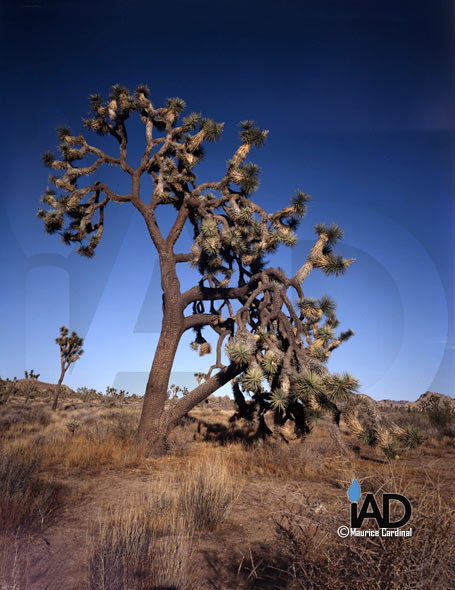Blockchain is the lover artists have been waiting for, but didn’t know.
2 of 2 in the Cryptocurrency Blockchain & Art series
by Maurice Cardinal
Blockchain supports cryptocurrencies like Bitcoin, Ethereum, and many others, and offers artists a solution for the longstanding argument that the internet is an unsafe space, for copyright reasons mainly, to put original works of art online. It’s an argument many artists still make because for the most part they don’t understand how the internet works.
Artists like to create art, but hate the selling factor so they take lesson after lesson about esoteric elements like light, composition, color, contrast, texture, this-that-and-the-other-thing; and still their art sits on the floor of their basement or a closet. Technically they are excellent executioners, but no one knows of them in the real world … where it counts.
 Thanks to galleries and auctions, and today also thanks to innovations like cryptocurrency, blockchain, Bitcoin, Ethereum and all that goes with it, art dabblers and real artists have equal access to buyers. Blockchain removes all the excuses artists use to avoid rejection. Artists are now standing bare for all of us to see. We still don’t know what you’re thinking, but we do know how you’re thinking.
Thanks to galleries and auctions, and today also thanks to innovations like cryptocurrency, blockchain, Bitcoin, Ethereum and all that goes with it, art dabblers and real artists have equal access to buyers. Blockchain removes all the excuses artists use to avoid rejection. Artists are now standing bare for all of us to see. We still don’t know what you’re thinking, but we do know how you’re thinking.
Blockchain decentralizes the internet so no one person has power over you. It’s a pretty big deal when you consider that the traditional art world in some cases and respects keeps artists subservient. The relationship is usually healthy, but inherently it is designed to control the emotional disposition of the artist as well as the buyer. It’s not rocket science. It’s compliance based on elitism, similar to how the wine market operates, but at a much higher intellectual and economic level.
Blockchain uses strong cryptography and decentralized distribution to change how we sell everything, including and especially art of all types like paintings, photos, sculptures, music, and more.
Decentralization is the overlooked magic elixir. Decentralized distribution creates an inherent safety net. With blockchain, artists are no longer as dependent on others to promote their work.
All you need is your art, an Instagram account, a blog, and an e-wallet, and you can connect with prospects and sell your work for whatever price the market will bear. The rule of thumb is to price it accurately so it reflects your time and talent. If you choose, artists and galleries can now charge realistically higher prices with less fear of losing buyers because blockchain allows a buyer with meager funds to purchase just a “share” of the art as an investment even if the value of the piece is in the tens of thousands or more. Art can now reflect the true value of the artist. Today, more than one buyer can own the same piece just like owning stocks of IBM. Not only can they buy a part, or all of a work, buyers can display and show their friends too, even when they only own a share of the art. If buyers think an emerging artist is hot and has potential to get hotter they can now be part of the discovery excitement, and not only support the artist today, they can also reap value from their investment as the artist’s organic value increases over time.
Most artists don’t understand that galleries judiciously keep the number of artists they represent low in order to elevate the value of their roster. It’s based on artificial exclusivity and scarcity, as in “there are no other artists like this artist”. The perception of value is based on what a smart gallery owner can elicit from a buyer during a sales cycle.
 Have you ever wondered why many galleries don’t list the price of a work? It’s because when a prospect shows interest, a smart gallery client-relations host will have already subtly gauged the temperature of a potential buyer as they walked in the door. Hosts discreetly observe how the buyer is dressed, their demeanor, how intelligent they seem, and most of all, their level of interest. Just like poker players, buyers have “tells.” Gallery hosts are experts at reading body language in exactly the same way a high-level sales agent operates. The value isn’t solely based on the organic value of the art. It’s also based on what the buyer will pay, which sometimes elevates art into an elite market quite rapidly, especially in the digital marketing and blockchain era.
Have you ever wondered why many galleries don’t list the price of a work? It’s because when a prospect shows interest, a smart gallery client-relations host will have already subtly gauged the temperature of a potential buyer as they walked in the door. Hosts discreetly observe how the buyer is dressed, their demeanor, how intelligent they seem, and most of all, their level of interest. Just like poker players, buyers have “tells.” Gallery hosts are experts at reading body language in exactly the same way a high-level sales agent operates. The value isn’t solely based on the organic value of the art. It’s also based on what the buyer will pay, which sometimes elevates art into an elite market quite rapidly, especially in the digital marketing and blockchain era.
Blockchain makes it feasible for an artist to sell a work for pennies if they choose, which isn’t something a gallery can do because they make their fee based on a commission. The higher the price of the work, the more profit a gallery will make. Blockchain however allows galleries and artists put a transparent organic value on the art that works for both the buyer and seller.
Part of the reason blockchain works is because there are very minimal transaction or agent fees, sometimes just pennies, i.e., you don’t have to pay for brick and mortar gallery space, PayPal or Visa charges, or online gallery ecommerce fees, plus, if your art is digital you won’t even have shipping fees. You get to keep almost every penny, which makes art affordable and easier for buyers to snap up when they see something they really like. All of a sudden the piece a buyer spontaneously falls in love with is attainable. Digital marketing is a powerful emotional sales supplement to everything artists and galleries are already doing. It represents a paradigm shift in the value and distribution of art.
 Blockchain is transparent, and everything you do is tracked, so over-inflating the price of your work isn’t recommended. You need to be realistic because everyone can trace your steps, which is a good thing and in part how the ownership of your art is protected online. Digital and digitized art now has intrinsic value that can be easily protected and monitored.
Blockchain is transparent, and everything you do is tracked, so over-inflating the price of your work isn’t recommended. You need to be realistic because everyone can trace your steps, which is a good thing and in part how the ownership of your art is protected online. Digital and digitized art now has intrinsic value that can be easily protected and monitored.
Exclusivity is the key to commanding a higher price so the goal is to position the value of your art as an original piece or a limited “scarce” edition.
Blockchain is a win/win/win for artist, gallery and buyer.
Read the first post in this series …
Contact the author, Maurice Cardinal for more info regarding Blockchain Art


